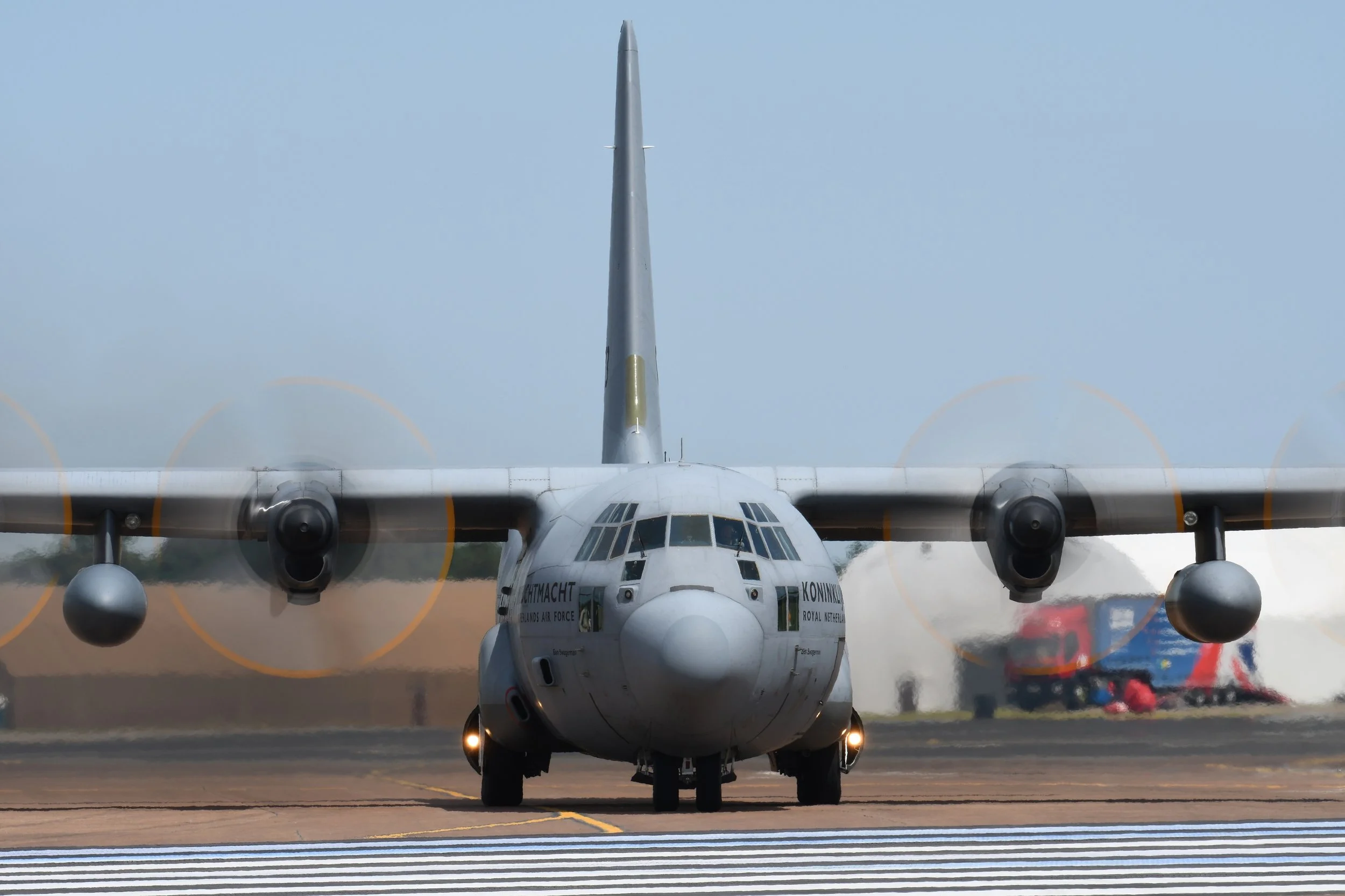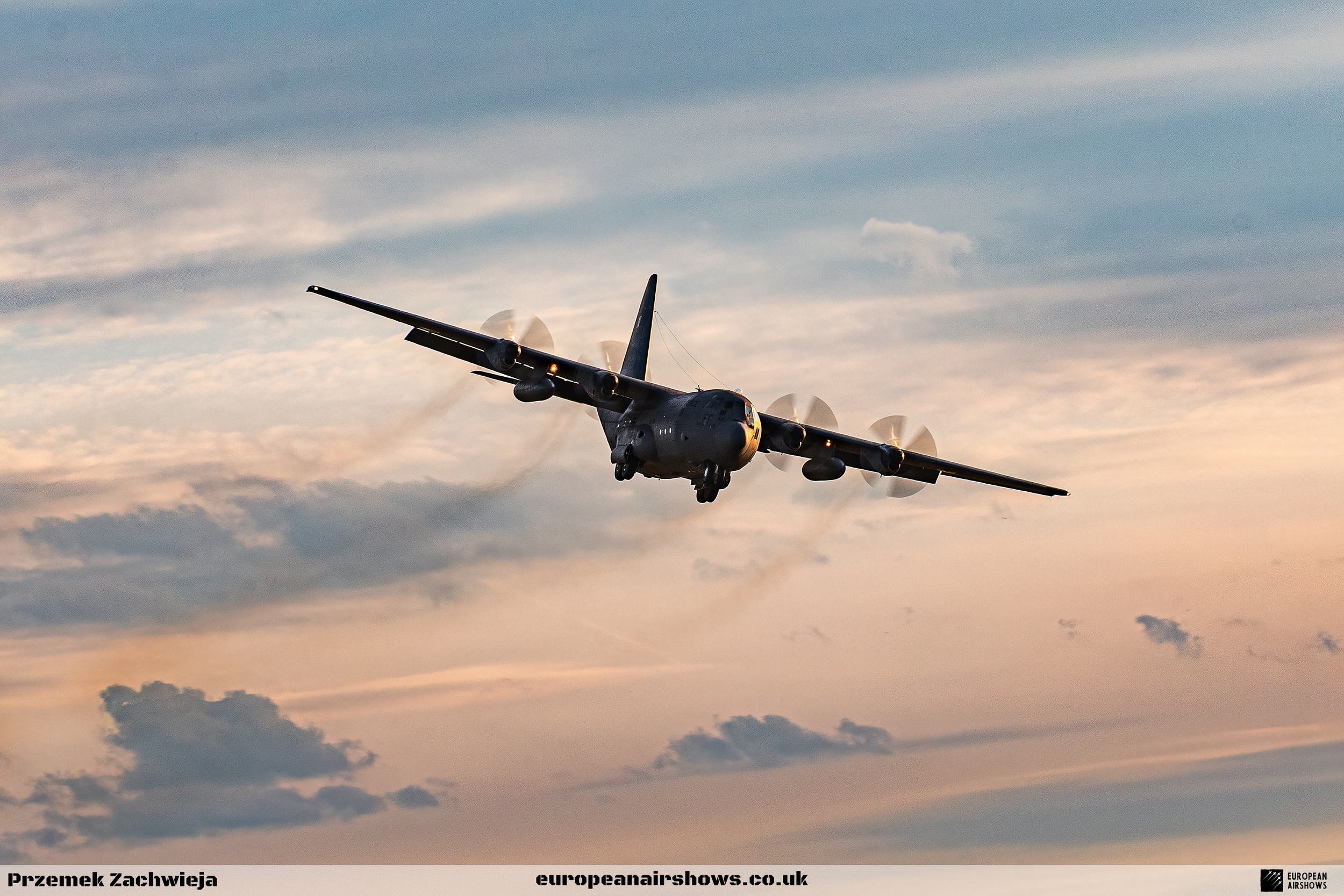
August 23 / Lockheed C-130 Hercules first flight
First Flight 23 August 1954
Lockheed C-130 Hercules
The Lockheed C-130 Hercules is a versatile military transport aircraft that has become one of the most recognizable and enduring aircraft in aviation history. Developed in the late 1950s, the C-130 was designed to perform a wide range of missions, including troop transport, cargo airlift, medical evacuation, and aerial refuelling. Its unique design, rugged construction, and adaptability have made it an indispensable asset for air forces around the world.
The origins of the C-130 can be traced back to the early 1950s when the United States Air Force (USAF) identified a need for a tactical airlift aircraft that could operate from short and unpaved airstrips. At the time, the USAF was transitioning from World War II-era aircraft to more modern designs, and there was a growing demand for transport aircraft that could deliver troops and supplies directly to the front lines. Lockheed, led by chief engineer Clarence “Kelly” Johnson, began the design process for a new tactical airlift aircraft.
Lockheed’s design team proposed the Model 382, which featured a high-wing configuration, four turboprop engines, and a rear ramp for loading and unloading cargo. The aircraft was designed to be highly manoeuvrable, capable of operating in confined spaces, and able to carry a wide variety of cargo. The design also included a pressurized cabin, which allowed for the transport of personnel and cargo at higher altitudes.
The prototype C-130, designated YC-130, made its maiden flight on August 23, 1954. The initial flight tests demonstrated the aircraft’s impressive performance capabilities, including short takeoff and landing (STOL) abilities, which were crucial for tactical operations. The USAF was impressed with the C-130’s performance and ordered the aircraft into production, with the first operational variant designated as the C-130A Hercules.
The C-130A entered service in 1956, and its versatility quickly became apparent. The aircraft could be configured for various missions, including troop transport, cargo airlift, and medical evacuation. The rear ramp allowed for rapid loading and unloading of cargo, and the spacious cargo hold could accommodate a wide range of equipment, vehicles, and personnel.
Throughout the late 1950s and 1960s, the C-130 Hercules proved its worth in various conflicts, including the Vietnam War. Its ability to operate from short and unpaved airstrips made it an invaluable asset for transporting troops and supplies to remote locations. The aircraft played a crucial role in logistics during the war, often flying into areas that were inaccessible to larger transport aircraft. The C-130 also participated in psychological operations, dropping leaflets and supplies to support U.S. and allied forces.
As the demand for tactical airlift capabilities grew, Lockheed continued to develop and improve the C-130. Several variants were introduced over the years, each designed to meet specific mission requirements. The C-130E, introduced in the 1960s, featured upgraded engines and increased payload capacity. The C-130H, which entered service in the late 1970s, included further improvements in avionics, engines, and cargo handling systems.
The C-130 Hercules has also been adapted for a variety of specialized roles beyond transport. Variants have been developed for aerial refuelling (KC-130), search and rescue (HC-130), weather reconnaissance (WC-130), and firefighting (C-130 air tanker). The aircraft’s adaptability has allowed it to remain relevant in modern military operations, and it has been used extensively in humanitarian missions, disaster relief, and peacekeeping operations.
The C-130’s operational history is marked by its participation in numerous conflicts and missions around the world. It has been used by the U.S. military in operations such as Desert Storm, Operation Enduring Freedom in Afghanistan, and Operation Iraqi Freedom. The aircraft has also been employed by many foreign air forces, with over 70 countries operating various C-130 variants.
In addition to its military service, the C-130 Hercules has found a place in civilian aviation. Some retired military C-130s have been converted for use in firefighting, aerial survey, and cargo transport. The aircraft’s rugged design and reliability have made it a popular choice for various commercial applications.
As of the early 21st century, the C-130 Hercules remains in active service with the U.S. Air Force and many allied nations. The aircraft has undergone continuous upgrades to enhance its capabilities, including modern avionics, improved engines, and advanced cargo handling systems. The most recent variant, the C-130J Super Hercules, features state-of-the-art technology, including fly-by-wire controls, a glass cockpit, and enhanced fuel efficiency.
The C-130 Hercules has left an indelible mark on military aviation history. Its combination of versatility, reliability, and performance has made it one of the most successful transport aircraft ever built. With thousands of units produced and a service life that has spanned several decades, the C-130 continues to play a vital role in military operations and humanitarian missions worldwide. Its legacy as a workhorse of the skies endures, and it remains a symbol of innovation and adaptability in the face of evolving operational demands.
Chipmunk Facts
Long Service Life: The C-130 Hercules has been in continuous production since its first flight in 1954. It is one of the longest-serving military aircraft in history, with various models still in service around the world today.
Multiple Variants: The C-130 has been developed into numerous variants for different roles, including cargo transport, medical evacuation, aerial refuelling, search and rescue, and even as a gunship (AC-130). This adaptability has made it a favourite among military forces.
Short Takeoff and Landing (STOL): The C-130 is designed for short takeoff and landing capabilities, allowing it to operate from unpaved or semi-prepared airstrips. This feature is crucial for missions in remote or austere environments.
Tactical Airlift: The C-130 is primarily used for tactical airlift missions, which involve transporting troops, supplies, and equipment directly to frontline areas. Its ability to operate in diverse environments makes it essential for military operations.
Cargo Capacity: The C-130 can carry a wide variety of cargo, including oversized loads like helicopters, ambulances, and military vehicles. It has a maximum payload capacity of approximately 45,000 pounds (20,400 kg), depending on the variant.
Global Reach: The C-130 has been used by over 70 countries, making it one of the most widely used military transport aircraft worldwide. Its versatility and reliability have contributed to its popularity among various air forces.
Aerial Firefighting: Some C-130s have been modified for aerial firefighting operations, equipped with large tanks to drop fire retardant on wildfires. The Modular Airborne Fire Fighting System (MAFFS) allows the C-130 to assist in combating large forest fires.
Crew Size: The standard crew for a C-130 varies based on the mission and configuration, but it typically includes a pilot, co-pilot, flight engineer, navigator, and loadmaster. This allows for efficient operation and management of cargo.
Combat Search and Rescue: The C-130 has been utilized in combat search and rescue (CSAR) operations, providing support for downed pilots and stranded personnel. Its ability to operate in challenging environments makes it a valuable asset in rescue missions.
Continuous Upgrades: The C-130 has undergone numerous upgrades over the years, including improvements in avionics, engines, and cargo handling systems. The latest variant, the C-130J Super Hercules, features modern technology and enhanced performance capabilities.

































